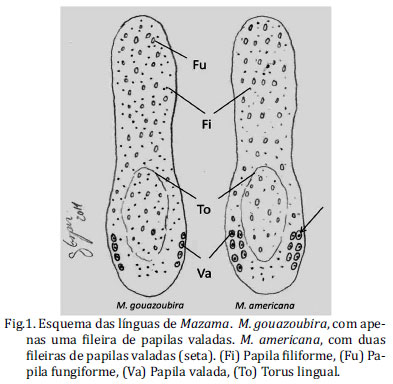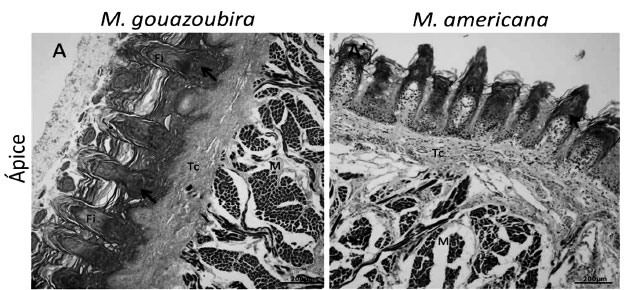The type of feeding is dependent on the environment in which the animal lives, fact that's responsible for changes in morphology such as stratification, level of keratinization and functionality. Among the functional morphological structures of the tongue the papillae are worth mentioning due to their close relation to the diet. Two Cervidae species were used, five Mazama gouazoubira and two Mazama americana. Their tongues were divided into three parts, apex, body and root, and comparatively analyzed by light and scanning electron microscopy. The filiform, fungiform and vallate papillae were present in the two species' tongue and presented the same distribution, differing only in the quantity of vallate papillae on the root of the tongue, fact that might be related to the diet. Moreover, their distribution resembles that of other herbivore species.
Tongue; Mazama americana; Mazama gouzoubira; ruminants; wild animals








